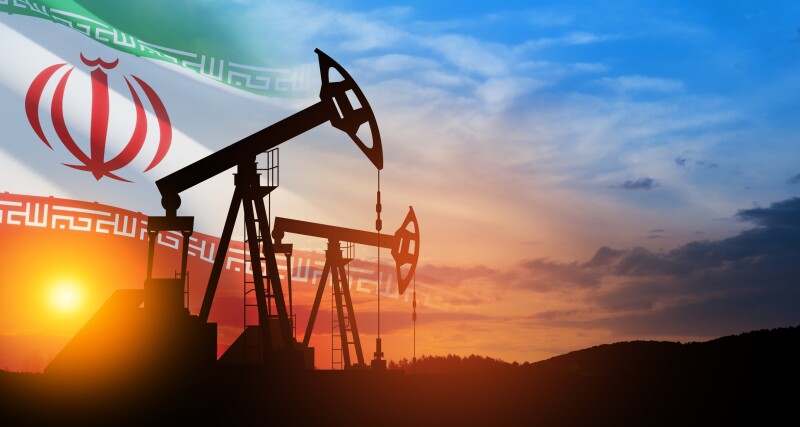Iran has signed $13 billion in deals with domestic service companies with intentions to add 350,000 B/D of new oil production from six major fields over the next 12 months, as Chinese demand continues to drive Iranian oil exports.
A contract-signing ceremony broadcast on state TV on 17 March coincided with the 73rd anniversary of the nationalization of the Iranian oil industry and the start of the Persian new year (the 13-day Nowrus festival which begins 20 March).
The Iranian National Oil Company (NIOC) signed the largest of the agreements, a $11.5 billion, 20-year contract for integrated development of Iran’s largest oil field, Azadegan, with the Dasht Azadegan Arvand Oil and Gas Development Company, according to the Iranian oil ministry’s Shana news service.
The project aims to more than double production to 550,000 B/D from 205,000 B/D at Azadegan which has an estimated 32 billion bbl of oil in place. Field development is ongoing with the drilling of 185 new wells of which 60 were recently put into operation, according to Iran’s oil ministry.
The field is located in West Karoun, 80 km west of Ahvaz near Iraq’s Majnoon field.
Tackling Azar’s Complex Geology and Rejuvenating the Middle East’s Oldest Oil Field
Other contracts signed by NIOC included
- A 20-year agreement for Phase 2 of the Azar field development with Sarvak Azar Engineering and Development Company. The $1.036 billion investment aims to raise production by 177 million bbl by drilling 19 new wells (18 production and one disposal well), installing downhole pumps, and building surface infrastructure for production-enhancing activities including hydraulic/acid fracturing, the ministry said. Azar has a complicated geological structure which challenges drilling operations. It is located in Ilam Province in western Iran.
- Phase 2 of the Masjed Soleyman oilfield development. Located in Khuzestan Province, Masjed Soleyman has produced 1.3 billion bbl of oil since 1908. CNPC International, a subsidiary of China National Petroleum Corporation, carried out the first stage under a buyback on the field which is considered the oldest oil field in the Middle East. Masjed Soleyman holds an estimated 6.2 billion bbl of oil in place.
- Additional contracts to develop the Soumar, Saman, and Delavaran fields located in the operational area of the Iranian Central Oil Fields Company in western Iran.
China Drives Growth in Iranian Oil Exports
Tehran's exports of crude oil grew by roughly 50% last year to a 5-year high of about 1.29 million B/D with roughly 90% of those exports going to China, according to data from European research firm Kpler.
Iran produced 2.99 million B/D bbl in 2023, 440,000 bbl more than in 2022, according to the International Energy Agency, which predicts a further rise of 160,000 bbl in 2024.
A week before the televised contract signings, Iran announced it has given $20 billion in contracts to domestic firms to ramp up production from the offshore South Pars gas field in the Gulf, which it shares with Qatar, according to Agence France-Presse.
In 2018, TotalEnergies (Total at the time) was forced to withdraw from its participation in South Pars when Western sanctions were reimposed, and foreign companies forced to leave the country after the US withdrew from a deal designed to curb Tehran's nuclear program.
Iran was the world's seventh-largest crude oil producer in 2022; it also holds the third-largest proven oil reserves behind Venezuela and Saudi Arabia, according to the US Energy Information Administration.


